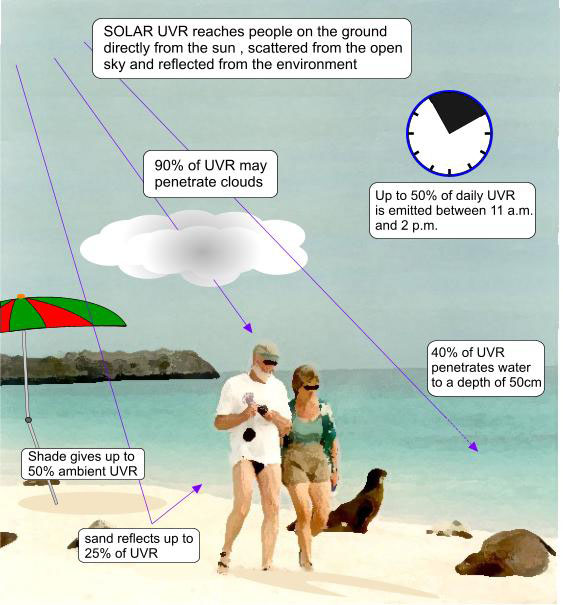The Centers for Disease Control released a recent report asserting that one out of every five individuals living in the U.S. will, at some point in their lives, be diagnosed with skin cancer. Considering the many options we have to use with which to protect ourselves against damaging ultraviolet rays, why is this statistic so high? One reason may lie in the fact that skin cancer does not present any physically uncomfortable symptoms, even in the later stages when melanoma has progressed into the deeper layers of the skin.
Unfortunately, we also tend to ignore skin problems that are small and barely noticeable, such as tiny, odd-looking moles or discolorations often attributed to aging or genetics. Because they don’t hurt, spread and are usually located on areas of our body covered by clothing, many precancerous skin lesions are neglected until they have developed into full-blown skin cancer requiring invasive procedures, chemotherapy and intermittent hospitalization.
What is Ultraviolet Radiation?
The warmth we feel from the sun’s rays is actually a type of radiation called ionizing radiation. This high-frequency light contains enough energy to “ionize”, or eliminate, an electron from molecules comprising the radiation, making the energy unstable and extremely damaging to human DNA cells. When enough UV radiation is allowed to enter a cell, mutations tend to occur within the DNA, specifically to the genes living inside DNA. Cell death may ultimately result if enough ionizing radiation seeps into cell DNA, which can promote growth of cancerous tumors and lesions.
We know that UV light is carcinogenic due to evidence accumulated from studying survivors of atomic bomb blasts or nuclear accidents who eventually developed varying kinds of cancers. Although these people admittedly received tremendous amounts of ionizing radiation in a short period, scientists have determined that no threshold exists which does not deem UV light as entirely safe to humans.
UV Radiation and Sunburn
Experiencing a red, painful sunburn means you have overexposed your skin to the sun and the affected skin is initiating an inflammation response to repair the damage. Production of melanin increases when skin is sunburned because melanin (the substance that determines skin color) absorbs ionizing radiation to prevent DNA damage. This explains why a sunburn tends to develop into a “tan” once the inflammation fades.
Sunlight should not be avoided, however, because we need UVB radiation to promote production of vitamin D by the skin, a nutrient necessary for muscle and bone health. How much sun you should receive without increasing your risk for suffering skin cancer depends on your geographical position, what season it is, whether it is cloudy or sunny and time of day. In the U.S. most people receive the most intense UV light during the summer between the hours of 11:00 a.m. and 4:00 p.m.
What You Can Do to Protect Your Skin
In addition to preventing cell DNA damage, protecting your skin from UV rays will also protect against premature wrinkling and other signs of aging such as liver spots, skin tags and excessive mole growth. Other than wearing clothing and remaining in the shade on hot, sunny afternoons, here are more ways to decrease the risk of developing melanoma:
Important Sunscreen Information

About Ultraviolet Radiation
Check the expiration date to make sure the sunscreen is no more than three years old before applying it thickly on your skin. If you have sensitive skin, rub a small amount on the back of your hand to test for an allergic response. Some sunscreens may say they are hypoallergenic but people have reported skin irritations with these types of hypoallergenic lotions.

